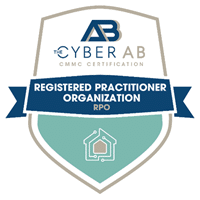Safeguarding Corporate Networks and Data
What are Good Cyber Hygiene Practices for Network Security?
Here’s how network security aligns with good cyber hygiene practices:
Firewalls and Intrusion Prevention Systems (IPS)
Implementing firewalls and IPS helps monitor and control incoming and outgoing network traffic, blocking potentially harmful traffic and unauthorized access attempts, thus safeguarding the network from external threats.
Regular Updates and Patch Management
Ensuring that network devices, including routers, switches, and firewalls, are regularly updated with the latest security patches and firmware helps mitigate known vulnerabilities, reducing the risk of exploitation by cyber attackers.
Access Control and Least Privilege
Implementing strict access control measures ensures that only authorized individuals have access to specific network resources based on their roles and responsibilities. Applying the principle of least privilege limits access to only what is necessary, reducing the potential attack surface.
Network Segmentation
Segmenting networks into separate zones or segments using VLANs (Virtual Local Area Networks) or other techniques helps contain breaches, limit lateral movement by attackers, and protect critical systems from unauthorized access.
Encryption and VPNs
Utilizing encryption protocols and virtual private networks (VPNs) ensures secure data transmission over networks, especially for remote access scenarios. This protects sensitive information from interception or eavesdropping by unauthorized entities.
Monitoring and Incident Response
Implementing network monitoring tools and establishing incident response procedures allows for the detection of suspicious activities or anomalies within the network. Timely response and mitigation of security incidents are crucial to limiting the impact of potential breaches.

User Training and Awareness
Educating employees about network security best practices, such as recognizing phishing attempts, using secure passwords, and being cautious about sharing sensitive information, contributes to a more secure network environment.
Regular Security Audits and Assessments
Conducting periodic security audits and assessments helps identify vulnerabilities, misconfigurations, or weaknesses within the network infrastructure. Addressing these issues proactively enhances the network’s overall security posture.
Backup and Recovery Planning
Regularly backing up critical data and having a robust recovery plan in place in case of network disruptions or security incidents ensures business continuity and minimizes the impact of potential cyber-attacks.
Compliance with Standards and Regulations
Adhering to industry-specific standards and regulatory requirements ensures that the network security measures meet established benchmarks and guidelines, reducing the risk of non-compliance-related vulnerabilities.
Incorporating these network security practices into an organization’s cyber hygiene regimen is essential for establishing a robust defense against a wide range of cyber threats and ensuring the overall resilience of the network infrastructure.
What are Some Good Cyber Hygiene Practices for Data Protection?
These measures are designed to safeguard sensitive information from unauthorized access, breaches, and data loss:
Data Encryption
Employing encryption techniques for sensitive data—both in transit and at rest—ensures that even if attackers gain access to the data, they cannot decipher or use it without the encryption keys.
Access Controls
Implementing strict access controls ensures that only authorized individuals or systems have access to sensitive data. Role-based access control (RBAC) and authentication mechanisms help limit data exposure to those who need it for their job functions.
Data Masking and Anonymization
Masking or anonymizing sensitive information in non-production environments or when sharing data for testing purposes helps protect the privacy of individuals and minimizes the risk of exposure.
Regular Data Backups
Implementing regular and secure data backups ensures that even in the event of a breach or data loss, organizations can recover and restore their information without significant disruption.
Data Retention and Disposal Policies
Establishing policies for data retention and secure disposal of outdated or unnecessary data helps minimize the risk of data breaches. Securely disposing of data prevents it from falling into the wrong hands.
Secure Data Transmission
Employing secure communication protocols, such as SSL/TLS for web traffic or encrypted email services, ensures that data transmitted over networks remains protected from interception by unauthorized entities.
Monitoring and Auditing
Implementing robust monitoring and auditing mechanisms helps detect unauthorized access attempts or anomalies in data access patterns. Regular audits identify vulnerabilities and ensure compliance with security policies.
Data Loss Prevention (DLP)
Implementing DLP solutions helps prevent the unauthorized transfer or leakage of sensitive data by monitoring and controlling data movements within and outside the organization’s network.
Employee Training
Educating employees about handling sensitive data, recognizing phishing attempts, and following data security protocols is crucial. Well-trained staff are less likely to inadvertently expose sensitive information.
Compliance with Data Protection Regulations
Integrating these data protection measures into an organization’s cyber hygiene practices forms a robust defense against data breaches, unauthorized access, and data loss, ultimately fostering a more secure and resilient data environment.

How Does Employee Training Help with Cyber Hygiene?
Employee Training can Help in Multiple Ways Including:
Awareness of Threats
Training sessions educate employees about various cyber threats, including phishing, social engineering, malware, and ransomware. Understanding these threats empowers employees to recognize and avoid potential risks.
Recognizing Phishing Attempt
Training helps employees identify phishing emails and other social engineering tactics used by cybercriminals to trick individuals into revealing sensitive information. They learn to scrutinize emails, links, and attachments for signs of phishing.
Adherence to Security Policies
Employees become familiar with company policies and procedures related to data handling, password management, software usage, and reporting security incidents. Training reinforces the importance of compliance with these policies.
Effective Use of Security Tools
Employees learn how to use security tools and software effectively, such as antivirus programs, firewalls, VPNs, and encryption tools, to safeguard sensitive data and prevent cyber attacks.
Implementing Best Practices
Training sessions provide guidance on best practices for creating strong passwords, updating software, securing devices, and practicing safe browsing habits. Employees are encouraged to apply these practices in their daily work routines.
Response to Security Incidents
Training prepares employees to respond effectively to security incidents. They learn the steps to take in case of a breach, such as whom to contact, how to report incidents, and immediate actions to mitigate risks.
Cultivating a Security-Conscious Culture
Continuous training fosters a culture of cybersecurity within the organization. Employees become more vigilant, accountable, and proactive in maintaining cyber hygiene, contributing to a collective effort to enhance security.
Risk Reduction
Educated employees are less likely to engage in risky behaviors that could compromise the organization’s security. Training reduces the chances of accidental data breaches caused by negligence or lack of awareness.
Adaptation to Evolving Threats
Regular training sessions keep employees updated about new and evolving cyber threats. They learn about emerging attack techniques and how to adapt their behaviors to mitigate these risks.
Improving Overall Security Posture
A well-trained workforce forms a strong line of defense against cyber threats. Employees who are knowledgeable about cybersecurity contribute to an organization’s overall security posture.
Employee training is a proactive measure that empowers individuals within an organization to understand, identify, and mitigate cyber risks, thereby significantly contributing to improved cyber hygiene and overall security resilience.

What are some Good Cyber Hygiene Practices for Remote Workers?
Maintaining good cyber hygiene is crucial for remote workers to safeguard their data and devices.
Here are Some Good Cyber Hygiene Practices for Remote Workers:
Use Strong Passwords
Employ complex passwords or passphrases for all accounts and change them regularly. Consider using a password manager to generate and store unique passwords.
Enable Two-Factor Authentication (2FA)
Activate 2FA wherever possible. This adds an extra layer of security by requiring a second form of verification, such as a code sent to your phone.
Update Software and Systems
Regularly update operating systems, applications, and antivirus software to patch vulnerabilities and protect against known threats.
Secure Network Connections
Use Virtual Private Networks (VPNs) when connecting to public Wi-Fi to encrypt data transmissions and prevent unauthorized access.
Be Cautious with Emails and Links
Avoid clicking on suspicious links or downloading attachments from unknown sources. Be vigilant against phishing attempts by verifying the sender’s email address and checking for red flags.
Secure Devices
Encrypt your devices and enable remote wiping features in case of theft or loss. Use screen locks and biometric authentication if available.
Back Up Data Regularly
Keep backups of important files in secure, separate locations, either using cloud storage or external hard drives, to prevent data loss in case of a cyber incident.
Limit Access
Only grant access to necessary files and applications. Avoid sharing sensitive information over insecure channels.
Educate Yourself
Stay informed about the latest cybersecurity threats and best practices. Regularly attend training sessions or workshops to understand evolving risks.
Create a Secure Workspace
Avoid working in public spaces where sensitive information might be visible or overheard. Secure physical documents and use privacy screens if necessary.
Prompt Reporting of Security Incidents
Encourage immediate reporting of any suspicious activities or security incidents to the IT or security team to mitigate potential risks promptly.
Implement Company Policies
Adhere to company policies regarding cybersecurity. Follow guidelines set by your employer to ensure consistent security measures across the organization.
By integrating these practices into your routine, you can significantly reduce the risks associated with remote work and enhance overall cybersecurity.

What are the Types of Multi-Factor Authentication?
Two-factor authentication (2FA)
This is the most common form of MFA, requiring two different types of authentication, usually a password (something you know) and a code sent to your mobile device (something you have).
Three-factor authentication (3FA) or higher
Some systems or high-security environments might require additional factors, such as biometric scans, security questions, or hardware tokens.
How Does Multi-Factor Authentication Work?
When a user attempts to log in, they first enter their username and password (something they know).
After that, they’re prompted to provide an additional form of authentication, which could be a code sent to their mobile device, a fingerprint scan, or a security token (something they have).
Only after successfully presenting both forms of authentication are they granted access to the account or system.
Expert Consulting
Our Standards
ISO 27001
Information Security Management Systems
NIST/CMMC
Cybersecurity for DoD
ISO 20000-1
Service Management Systems
CMMI
Capability Maturity Model
ISO 27001
NIST/CMMC
ISO 20000-1
CMMI
Our Solutions
We offer this simple, effective solution to help small businesses meet their cybersecurity needs:
CORE Vault™
Everything you need for NIST/CMMC in one cloud-based solution
CORE Vault comes ready-made for compliance with the DoD contracting requirements of DFARS, NIST SP 800-171, and CMMC 2.0. With CORE Vault™, you can separate government data from your network and access it through a secure, cloud-based environment managed by our cyber experts. CORE Vault™ also includes the support needed to reach full compliance with the non-technical cybersecurity requirements, such as your system security plan and required policies.
The CORE Security Suite
- Document and record control
- User-friendly project dashboards
- Incident management
- Security change logs
- Risk register
- Asset management
We also provide standard-specific tools depending on your security requirements. For companies who require NIST/CMMC, we provide a simple SSP tool, an automated SPRS score calculator, and customizable policy templates crafted by our own CMMC experts.
Core Business Solutions, established in 2000, is a Registered Practitioner Organization through the Cyber AB and has been providing consulting and technical solutions for NIST/CMMC for over 5 years. Rick Krick is the Director of Security Solutions for Core Business Solutions and directs our Cybersecurity Services solutions including CMMC. Rick has over 25 years of experience in Management System implementations, software development, IT services, and certifications.




